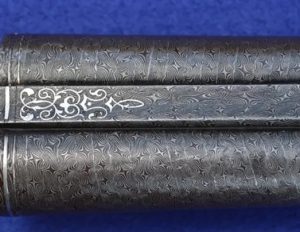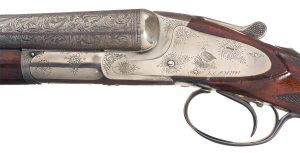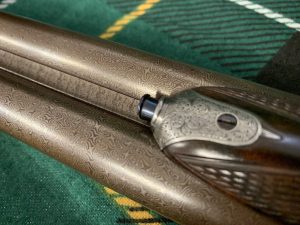How are Damascus Shotgun Barrels Made?
The History and Craftsmanship Behind Damascus Barrels
Damascus barrels have a rich history dating back several centuries. These barrels are renowned for their strength, durability, and unique swirling patterns, making them a prized possession for firearm enthusiasts and collectors alike. The craftsmanship involved in creating Damascus barrels is truly remarkable, with artisans employing a meticulous and intricate process to produce these masterpieces. In this article, we will delve into the fascinating world of Damascus barrels and unveil the secrets behind their creation.

Unveiling the Intricate Process of Damascus Barrel Production
The art of manufacturing Damascus barrels involves the fusion of different types of steel to create a composite material known as Damascus steel. This steel is renowned for its exceptional strength and distinctive patterns, which are achieved through a process called pattern welding. Pattern welding involves folding, twisting, and forging layers of steel together to create the desired pattern. The process begins by stacking alternating layers of high-carbon and low-carbon steel, which are then heated, hammered, and folded multiple times to ensure a homogenous blend.
Once the desired pattern is achieved, the Damascus steel is shaped into a barrel. This involves precision machining and the use of specialized tools to ensure the dimensions and specifications are met. The barrel is then heat-treated to enhance its hardness and durability. This step is crucial as it determines the overall performance of the barrel. After heat treatment, the barrel is carefully polished to reveal the mesmerizing patterns hidden within the steel. Skilled artisans meticulously remove any imperfections, ensuring a smooth and flawless finish.
From Steel to Art: Exploring the Steps in Making Damascus Barrels
The process of making Damascus barrels is a true testament to the skill and expertise of the craftsmen involved. The first step is selecting the appropriate types of steel to create the desired pattern and characteristics. The choice of steel is crucial as it determines the strength, flexibility, and appearance of the barrel. Once the steel is selected, it is heated to a specific temperature and then forged using a hammer or press. This process helps eliminate impurities and ensures a cohesive structure.

The next step involves creating the pattern. The forged steel is folded and twisted multiple times, with additional layers of steel added during each fold. This creates beautiful swirling patterns that are characteristic of Damascus barrels. The pattern is carefully manipulated by the blacksmith, who uses various techniques such as twisting, etching, and acid treatments to achieve the desired design. This intricate process requires years of experience and a deep understanding of metallurgy.
Once the pattern is finalized, the Damascus steel is shaped into a barrel through precision machining. This involves carefully removing excess material and ensuring the dimensions meet the specifications. After shaping, the barrel undergoes heat treatment to increase its hardness. The final step is polishing, where skilled artisans meticulously remove any imperfections and reveal the stunning patterns hidden within the steel. The result is a work of art that not only serves as a functional firearm component but also a testament to the craftsmanship of the artisans.

The craftsmanship and artistry behind Damascus barrels are truly awe-inspiring. The intricate process involved in creating these barrels showcases the skill and dedication of the craftsmen who have honed their expertise over generations. From selecting the right types of steel to final polishing, every step in the production of Damascus barrels requires meticulous attention to detail. The end result is a masterpiece that combines functionality with breathtaking beauty. Whether admired as a collector’s item or used for hunting or shooting, Damascus barrels stand as a testament to the ingenuity and artistry of their creators.
# # #


Comments